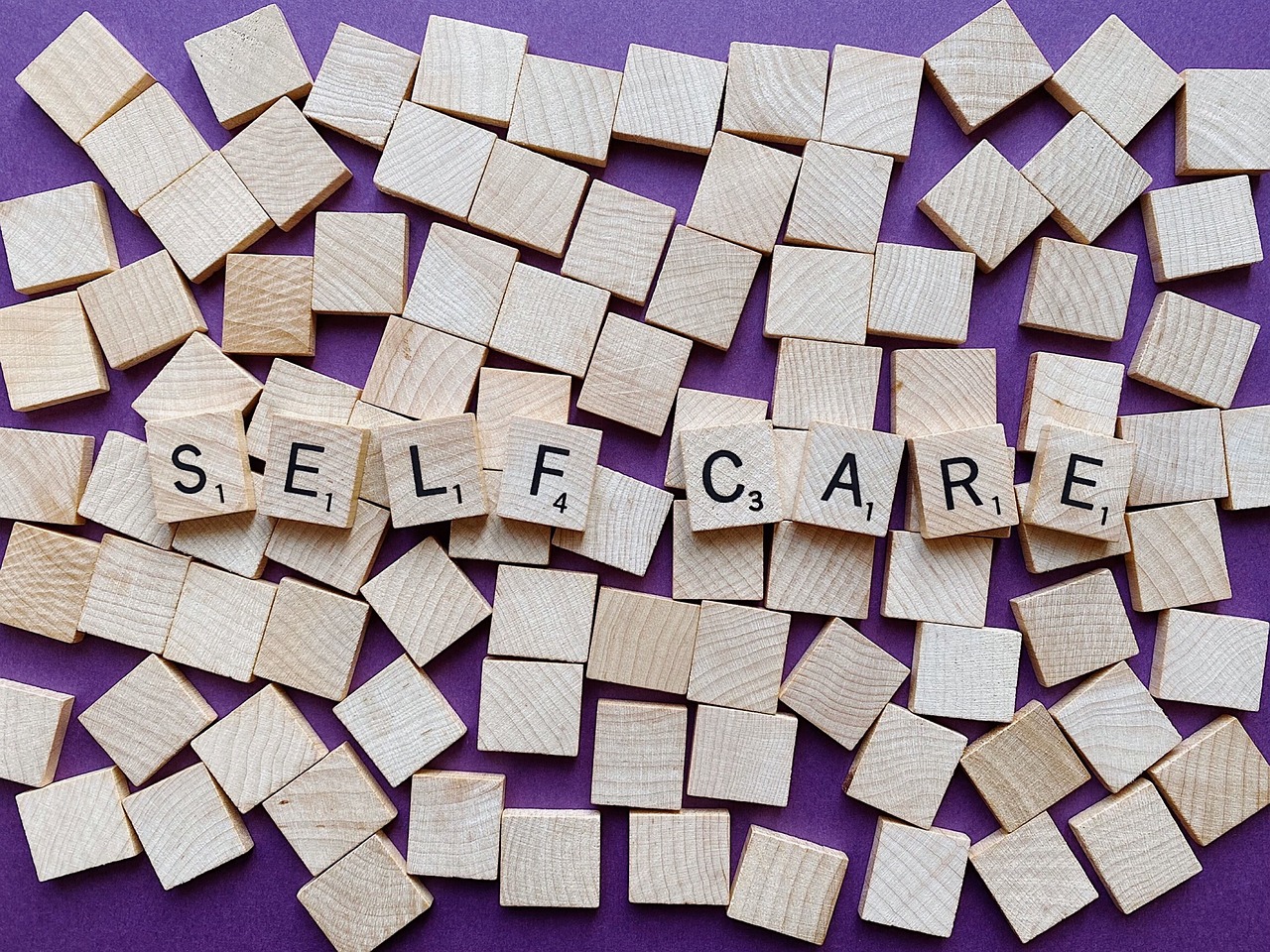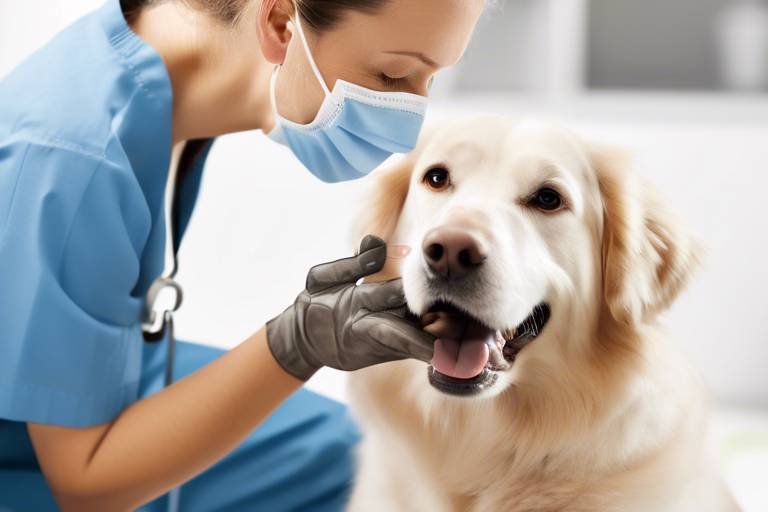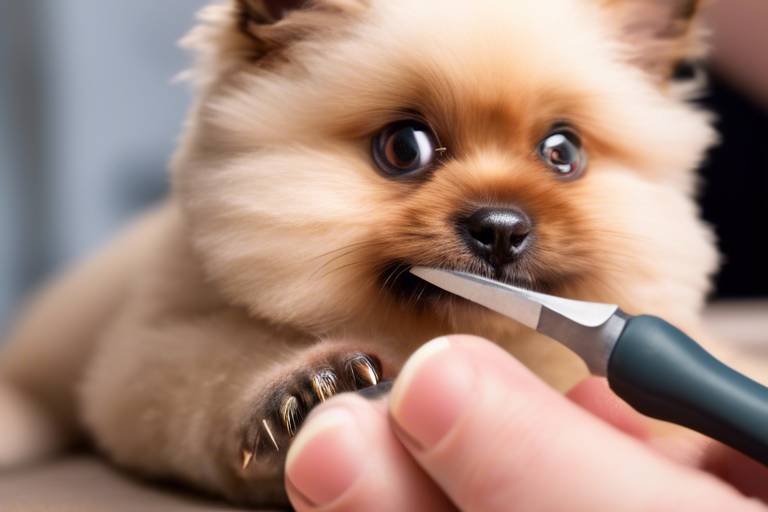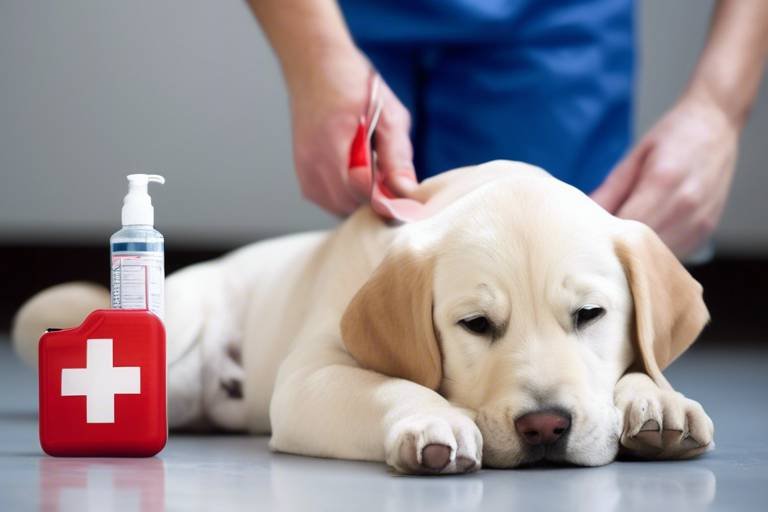How to Keep Your Pet's Ears Clean and Healthy
As pet owners, we often focus on the basics like feeding, walking, and playing, but ear health is a crucial aspect that can easily slip through the cracks. Just like humans, pets can suffer from ear infections and other issues if their ears are not properly cared for. So, what can you do to ensure your furry friend has clean and healthy ears? In this article, we’ll dive deep into the essential tips and insights on maintaining your pet's ear health, preventing infections, and ensuring their overall well-being through proper cleaning and care techniques.
Before we get into the nitty-gritty of ear cleaning, it’s important to understand your pet's ear anatomy. The ear is divided into three main parts: the outer ear, middle ear, and inner ear. The outer ear consists of the visible part (the pinna) and the ear canal, which leads to the middle ear. The middle ear contains structures that help with hearing and is connected to the inner ear, which plays a role in balance. Understanding this structure is key to recognizing common ear problems, as well as the importance of regular cleaning. Just as you wouldn’t ignore a scratch on your arm, you shouldn’t overlook your pet’s ear health!
When it comes to ear health, pets can face a variety of problems. Some of the most prevalent ear issues include:
- Infections: Bacterial or yeast infections can develop in the ear canal, often due to moisture or debris.
- Wax Buildup: Just like humans, pets can accumulate wax in their ears, which can lead to discomfort and potential infections.
- Parasites: Ear mites are a common issue, especially in younger pets, causing irritation and inflammation.
Recognizing these issues early can save your pet from unnecessary pain and discomfort. So, what are the signs to look for? Let’s explore!
Identifying symptoms of ear infections is crucial for prompt treatment. Some common signs include:
- Itching: If your pet is constantly scratching at their ears, it may indicate an issue.
- Redness: Inflammation and redness in the ear canal can be a telltale sign.
- Odor: A foul smell coming from the ear can indicate an infection.
Sometimes, the first sign of an ear problem is a change in behavior. If your normally playful pet starts shaking their head excessively or seems more irritable, it’s time to take a closer look. Think of it like when you have a headache; you might not want to do much until it’s resolved. Similarly, your pet may be feeling uncomfortable and need your help.
Physical signs are just as important to monitor. Look for swelling, discharge, or unusual redness in the ear area. Regular checks can help catch these symptoms early, much like how you’d check for any unusual bumps or bruises on your own body. If you notice anything out of the ordinary, don’t hesitate to consult your veterinarian.
Implementing preventive care strategies is essential for maintaining your pet’s ear health. Regular cleaning and check-ups can significantly reduce the risk of ear problems. Here are some tips:
- Schedule regular vet visits to monitor ear health.
- Keep your pet’s ears dry, especially after baths or swimming.
- Use a gentle cleaning solution recommended by your vet.
Now that you understand the importance of ear health, let’s dive into the practical aspects of cleaning your pet's ears. Cleaning doesn’t have to be a daunting task; with the right approach, it can be a smooth process for both you and your pet.
Selecting the appropriate ear cleaning solution tailored to your pet's needs is vital. Look for products specifically designed for pets, as human solutions can be too harsh. Consult your veterinarian for recommendations based on your pet’s specific needs.
Follow these steps for a safe and effective cleaning process:
- Preparation: Gather your supplies—ear cleaning solution, cotton balls, and treats for positive reinforcement.
- Application: Gently lift your pet's ear and apply the cleaning solution as directed. Massage the base of the ear to help loosen debris.
- Wipe Clean: Use a cotton ball to wipe away the loosened debris. Avoid using cotton swabs, as they can push dirt further in.
- Post-Cleaning Care: Reward your pet with a treat and plenty of praise to create a positive association with the process.
Knowing when to consult a veterinarian for ear issues is crucial. If you notice persistent symptoms despite cleaning, or if your pet shows signs of severe discomfort, it’s time to seek professional help. Key indicators that warrant veterinary intervention include:
- Persistent scratching or head shaking
- Severe redness or swelling
- Discharge that looks unusual (e.g., yellow, green, or bloody)
1. How often should I clean my pet's ears?
It depends on the breed and individual needs. Generally, a monthly cleaning is sufficient for most pets, but consult your vet for personalized advice.
2. Can I use human ear cleaning products on my pet?
No, human products can be too harsh and may irritate your pet's ears. Always use products specifically formulated for pets.
3. What should I do if my pet resists ear cleaning?
Take it slow! Use treats and positive reinforcement to create a positive experience. If they continue to resist, consult your vet for guidance.
By following these tips and keeping an eye on your pet’s ear health, you can help ensure they stay happy and comfortable. Remember, a little attention goes a long way in keeping those furry ears clean and healthy!

Understanding Ear Anatomy
To effectively care for your pet's ears, it's essential to understand the anatomy of their ears. Just like humans, pets have a complex ear structure that plays a crucial role in their overall health and well-being. The ear is divided into three primary sections: the outer ear, the middle ear, and the inner ear. Each part has its own function and is susceptible to various health issues.
The outer ear consists of the visible part, known as the pinna, and the ear canal. This section is responsible for capturing sound waves and directing them toward the middle ear. The middle ear houses the eardrum and three tiny bones that transmit sound vibrations to the inner ear. Finally, the inner ear contains the cochlea, which converts sound vibrations into nerve impulses that the brain interprets as sound.
Understanding this anatomy is vital because it helps pet owners recognize potential problems. For instance, the ear canal is prone to infections due to moisture and wax buildup, particularly in breeds with floppy ears. Regular cleaning and examination can help prevent these issues. Here’s a quick overview of the ear structure:
| Ear Structure | Function |
|---|---|
| Outer Ear | Captures sound waves and channels them to the ear canal. |
| Middle Ear | Transmits sound vibrations to the inner ear. |
| Inner Ear | Converts sound into nerve impulses for the brain. |
By familiarizing yourself with your pet's ear anatomy, you can better understand the importance of regular ear maintenance. Keeping their ears clean not only prevents infections but also promotes their overall health. Remember, just as you wouldn’t ignore a scratchy throat or earache in yourself, your furry friend deserves the same level of attention and care!
Learn about prevalent ear issues such as infections, wax buildup, and parasites that can affect your pet's ear health, along with their symptoms and causes.
Identifying symptoms like itching, redness, and odor can help you recognize ear infections early, ensuring prompt treatment and preventing complications.
Changes in behavior, such as head shaking or excessive scratching, can indicate ear problems. Understanding these signs is crucial for timely intervention.
Physical signs like swelling or discharge from the ear can signal an underlying issue. Regular checks can help catch these symptoms early.
Implementing preventive care strategies such as regular cleaning and check-ups can significantly reduce the risk of ear problems in your pets.
Step-by-step instructions on safely and effectively cleaning your pet's ears, including recommended products and techniques to avoid injury.
Selecting the appropriate ear cleaning solution tailored to your pet's needs is vital for effective cleaning and maintaining ear health.
A detailed guide on the cleaning process, including preparation, application, and post-cleaning care to ensure a safe and comfortable experience for your pet.
Knowing when to consult a veterinarian for ear issues is crucial. This section outlines key indicators that warrant professional intervention for your pet's ear health.
Here are some common questions pet owners have regarding ear health:
- How often should I clean my pet's ears? It depends on the breed and ear type, but generally, once a month is a good rule of thumb.
- What signs indicate a serious ear issue? Symptoms like persistent odor, severe redness, or discharge should prompt a vet visit.
- Can I use human ear cleaning solutions on my pet? No, it's essential to use products specifically designed for pets to avoid irritation.

Common Ear Problems in Pets
When it comes to our furry companions, their ears are often overlooked during routine check-ups. However, just like humans, pets are prone to a variety of ear problems that can cause discomfort and even serious health issues if left untreated. Understanding these common ear problems is the first step toward ensuring your pet's ear health. Some of the most prevalent issues include ear infections, wax buildup, and parasites. Each of these conditions can lead to significant discomfort and can affect your pet's overall well-being.
Ear infections are one of the most common ailments affecting pets, particularly dogs. They can be caused by a variety of factors, including bacteria, yeast, or allergies. These infections often manifest with symptoms such as itchiness, redness, and even a foul odor emanating from the ear. If you notice your pet shaking their head frequently or scratching at their ears, it may be a sign that they are dealing with an infection.
Another issue that many pet owners encounter is wax buildup. Just like humans, pets produce ear wax, which serves to protect their ears. However, an excess of wax can lead to blockages, discomfort, and even infections. Regular cleaning can help prevent wax buildup, but it’s essential to do it correctly to avoid damaging the ear canal.
Parasites, such as ear mites, are another concern. These tiny creatures can cause intense itching and irritation in your pet's ears. If you notice your pet constantly scratching their ears or shaking their head, it may be time to investigate further. Ear mites are particularly common in cats and can be easily transmitted from one animal to another.
In summary, being proactive about your pet's ear health can save you from a lot of trouble down the road. Regular check-ups and being aware of the symptoms of common ear problems can help you catch issues early. Remember, a healthy pet is a happy pet!
Identifying symptoms like itching, redness, and odor can help you recognize ear infections early, ensuring prompt treatment and preventing complications.
Changes in behavior, such as head shaking or excessive scratching, can indicate ear problems. Understanding these signs is crucial for timely intervention.
Physical signs like swelling or discharge from the ear can signal an underlying issue. Regular checks can help catch these symptoms early.
Implementing preventive care strategies such as regular cleaning and check-ups can significantly reduce the risk of ear problems in your pets.
Q: How often should I clean my pet's ears?
A: It generally depends on the breed and individual needs of your pet. For most pets, a monthly cleaning is sufficient, but consult your veterinarian for personalized advice.
Q: What are the signs that my pet may have an ear infection?
A: Look for symptoms like head shaking, scratching at the ears, redness, swelling, or a foul odor. If you notice any of these signs, it’s best to consult your veterinarian.
Q: Can I use human ear cleaning solutions on my pet?
A: No, it’s not recommended. Human ear cleaning solutions can be too harsh for pets. Always use products specifically designed for animals.
Q: How can I prevent ear problems in my pet?
A: Regular cleaning, keeping your pet's ears dry, and scheduling routine veterinary check-ups can help prevent ear problems.
Signs of Ear Infections
When it comes to our furry friends, their health is paramount, and one of the most overlooked areas is their ears. Just like we might ignore a nagging itch or discomfort, pets can also suffer in silence until the problem escalates. So, how can you tell if your pet is battling an ear infection? Here are some telltale signs that can help you spot potential issues early on.
First off, itching is a major red flag. If you notice your pet constantly pawing at their ears or shaking their head vigorously, it’s time to take a closer look. This behavior can indicate that they’re experiencing discomfort, possibly from an infection. Pay attention to how often they’re scratching; if it seems excessive, it’s likely something is bothering them.
Another sign to watch out for is redness or swelling in the ear canal. If you gently lift your pet’s ear and see that the skin looks inflamed or irritated, it could be a sign of infection. Additionally, keep an eye out for any unusual odor emanating from their ears. A foul smell can be a strong indicator of an infection, as bacteria or yeast may be present. If your pet’s ears smell off, don’t ignore it!
Physical symptoms can also manifest in the form of discharge. If you notice any brown, yellow, or even bloody discharge coming from your pet's ears, this is a clear sign that something is wrong. Regular checks can help you catch these symptoms early, preventing more severe complications down the line.
Lastly, behavioral changes can be a significant indicator of ear problems. If your pet suddenly becomes more irritable or withdrawn, it may be because they’re in pain. Animals often hide their discomfort, but changes in their usual behavior can be a telltale sign that something is amiss.
To summarize, here are the key signs of ear infections to keep an eye on:
- Frequent scratching or pawing at the ears
- Redness or swelling in the ear canal
- Unpleasant odor from the ears
- Discharge from the ear
- Behavioral changes, such as increased irritability
By staying vigilant and recognizing these signs, you can ensure that your pet receives the care they need promptly. Remember, early detection is key to preventing further complications and keeping your furry friend happy and healthy!
Q: How often should I check my pet's ears?
A: It's a good idea to check your pet's ears at least once a week. Regular checks can help you catch any issues early.
Q: Can I clean my pet's ears at home?
A: Yes, you can clean your pet's ears at home, but it's essential to use the right products and techniques. Always consult your veterinarian for recommendations tailored to your pet's specific needs.
Q: What should I do if I notice signs of an ear infection?
A: If you notice any signs of an ear infection, such as itching, redness, or discharge, it's crucial to consult your veterinarian as soon as possible for a proper diagnosis and treatment plan.
Behavioral Changes
When it comes to our furry friends, their behavior often speaks volumes about their health. If you notice your pet acting differently, it might be time to pay closer attention, especially when it comes to their ears. Behavioral changes can be one of the first indicators that something isn’t quite right. For instance, if your dog or cat is suddenly shaking their head more frequently than usual, it can signal discomfort or irritation in their ears. Think of it as their way of waving a little red flag, letting you know that something is bothering them.
Another common behavioral change is excessive scratching or rubbing of the ears against furniture or the ground. This action might seem harmless, but it could indicate that your pet is trying to relieve an itch caused by an infection or wax buildup. Imagine if you had an itch that just wouldn’t go away; you’d likely be scratching at it constantly, right? Similarly, your pet's scratching could be their way of expressing distress.
Additionally, you might observe your pet becoming more withdrawn or irritable. Just like humans, pets can experience mood swings when they are in pain or discomfort. If your usually playful pup suddenly prefers to stay curled up in a corner rather than engaging in their favorite activities, it’s a sign that something might be off. Pay attention to these changes; they are crucial for early detection of potential ear problems.
It’s also worth noting that some pets may display signs of anxiety or aggression when their ears are touched. This reaction can stem from pain or sensitivity in that area. If your pet growls, flinches, or tries to pull away when you attempt to check their ears, it’s a clear indicator that you should investigate further. Just like a person who has a headache might not want anyone touching their head, your pet may feel the same way about their ears.
In summary, keeping an eye on your pet's behavioral changes is essential for maintaining their ear health. If you notice any of the following signs, it’s time to take action:
- Increased head shaking
- Excessive scratching or rubbing of ears
- Withdrawal or changes in mood
- Reactions of pain or discomfort when ears are touched
By being vigilant and responsive to these behavioral cues, you can ensure that your pet receives the care they need to maintain healthy ears and overall well-being.
Q: How often should I check my pet's ears?
A: It's a good practice to check your pet's ears at least once a week for any signs of dirt, wax buildup, or irritation.
Q: What are the signs of a serious ear problem?
A: Signs include persistent scratching, foul odor, swelling, discharge, or if your pet seems to be in pain when you touch their ears.
Q: Can I use human ear cleaning products on my pet?
A: No, you should only use products specifically designed for pets as human products can be harmful to them.
Q: How can I prevent ear infections in my pet?
A: Regular cleaning, keeping ears dry, and ensuring your pet is healthy overall can help prevent ear infections.
Physical Symptoms
When it comes to your pet's ear health, being vigilant about is crucial. Just like humans, pets can exhibit a range of signs that may indicate an underlying issue with their ears. One of the most common signs to look out for is swelling. If you notice that your pet's ear appears puffy or inflamed, it could be a signal of an infection or an allergic reaction. Additionally, keep an eye out for discharge. This could be a waxy buildup or, in more severe cases, pus, which might suggest a bacterial or yeast infection. The color and consistency of the discharge can provide valuable clues; for instance, a dark, waxy substance might indicate a yeast infection, while a yellow or green discharge could point to a bacterial infection.
Another symptom to be aware of is foul odor. If your pet's ears have an unpleasant smell, it's often a sign that something isn't right. This could be due to an infection or an accumulation of wax and debris. Furthermore, observe your pet's behavior closely. If they seem to be in discomfort or pain, such as flinching when you touch their ears, it’s a clear indication that you should investigate further. Regularly checking your pet's ears can help catch these symptoms early, allowing for timely intervention and treatment.
To help you understand the various physical symptoms associated with ear problems in pets, here's a quick reference table:
| Symptom | Possible Cause |
|---|---|
| Swelling | Infection, Allergic Reaction |
| Discharge | Wax Buildup, Bacterial or Yeast Infection |
| Foul Odor | Infection, Accumulation of Debris |
| Pain or Discomfort | Infection, Injury |
By keeping an eye out for these physical symptoms, you can play an essential role in maintaining your pet’s ear health. If you notice any of these signs, don’t hesitate to consult your veterinarian. After all, an ounce of prevention is worth a pound of cure, and early detection can lead to a quicker recovery for your furry friend.
- How often should I clean my pet's ears? It generally depends on the breed and their ear structure, but a good rule of thumb is to check and clean them once a month.
- What should I do if I notice a bad odor coming from my pet's ears? A bad odor can indicate an infection or buildup of wax. It’s best to consult your veterinarian for advice.
- Can I use human ear cleaning products on my pet? No, it’s important to use products specifically designed for pets, as human products can be too harsh and may cause irritation.
- What are some signs that my pet might have an ear infection? Look for signs such as excessive scratching, head shaking, swelling, and discharge from the ear.
Preventive Measures
When it comes to keeping your pet's ears clean and healthy, prevention is definitely better than cure. Just like we brush our teeth to avoid cavities, your furry friends need a little ear care routine to prevent pesky problems from popping up. Regular maintenance not only helps in keeping their ears clean but also ensures that you catch any potential issues before they escalate into something more serious. So, what can you do to maintain your pet's ear health? Let’s dive into some effective preventive measures!
First off, regular cleaning is key. Depending on your pet's breed and ear type, you might need to clean their ears more often. For instance, dogs with floppy ears are more prone to ear infections due to moisture and debris getting trapped inside. Aim for a cleaning schedule that fits your pet's needs—typically, once every couple of weeks is a good start. However, it’s essential to keep an eye on their ears regularly. If you notice any unusual odor, discharge, or excessive wax buildup, it might be time to clean them sooner.
Another important aspect is ensuring that your pet's ears stay dry. After baths or swimming, gently pat their ears dry with a soft towel. If your pet loves splashing in the water, consider using a pet-safe ear drying solution to help absorb any excess moisture. This simple step can significantly reduce the risk of infections, as bacteria thrive in damp environments.
In addition to cleaning and drying, regular veterinary check-ups are crucial. These appointments allow your vet to examine your pet's ears thoroughly and catch any potential problems early on. Your vet can also provide tailored advice based on your pet’s specific breed and lifestyle. Remember, prevention is not just about cleaning; it’s about maintaining overall ear health!
Lastly, be mindful of your pet's environment. Keeping their living area clean and free from allergens can also help maintain ear health. Dust, pollen, and other irritants can lead to ear problems, so consider using air purifiers or regularly cleaning their bedding. If your pet is prone to allergies, talk to your vet about potential triggers and how to manage them.
By incorporating these preventive measures into your pet care routine, you can help ensure that their ears remain clean, healthy, and free from infections. Remember, a little effort goes a long way in keeping your furry friend happy and healthy!

How to Clean Your Pet's Ears
Cleaning your pet's ears might sound like a daunting task, but with the right approach, it can be a simple and rewarding part of your pet care routine. Just like brushing your teeth or washing your hair, regular ear cleaning is essential for maintaining good hygiene and preventing potential health issues. So, let’s roll up our sleeves and dive into the step-by-step process of keeping those furry ears clean and healthy!
First things first, before you even think about cleaning, you need to gather your supplies. Having everything ready makes the process smoother and less stressful for both you and your pet. Here’s what you’ll need:
- Pet-friendly ear cleaning solution
- Cotton balls or pads
- Treats (for positive reinforcement)
- Towels (to catch any mess)
Now that you have your supplies, it’s time to prepare your pet for the cleaning session. Choose a quiet space where your pet feels comfortable. This could be your living room or even a cozy corner in the yard. The goal is to create a calm environment. You might want to have a friend help hold your pet if they are particularly squirmy. Once you’re ready, gently hold your pet’s head to keep them steady.
Next, it’s crucial to choose the right ear cleaning solution. Not all solutions are created equal, and using the wrong one can lead to irritation or worsen existing issues. Look for a solution specifically designed for pets, ideally one that is alcohol-free to avoid drying out the ear canal. If you’re unsure, don’t hesitate to ask your veterinarian for recommendations.
Now, let’s get down to the nitty-gritty of the cleaning process:
- Start by gently lifting your pet's ear flap to expose the ear canal.
- Apply the ear cleaning solution according to the product's instructions. Generally, you’ll want to fill the ear canal with the solution.
- Massage the base of the ear for about 20-30 seconds. This helps to loosen any wax or debris.
- Let your pet shake their head. This is a natural reaction that helps to remove excess solution and debris.
- Using a cotton ball or pad, gently wipe the inside of the ear flap and the outer part of the ear canal. Be careful not to insert anything deep into the ear, as this can cause injury.
- Reward your pet with a treat and lots of praise for being a good boy or girl!
After you’ve finished cleaning, it’s essential to monitor your pet's ears over the next few days. Look for any signs of irritation or infection, such as redness, swelling, or a foul odor. If you notice anything unusual, don’t hesitate to reach out to your veterinarian for advice.
In conclusion, cleaning your pet's ears doesn’t have to be a chore. With the right tools, a calm environment, and a little patience, you can keep your furry friend’s ears in tip-top shape. Remember, regular ear cleaning is not just about aesthetics; it’s about ensuring your pet's overall health and happiness!
Q: How often should I clean my pet's ears?
A: It depends on the breed and individual needs of your pet. Generally, cleaning once a month is a good rule of thumb, but pets with floppy ears or those prone to ear infections may require more frequent cleanings.
Q: Can I use human ear cleaning solutions?
A: No, human ear cleaning solutions can irritate your pet's ears. Always use products specifically designed for pets.
Q: What if my pet resists ear cleaning?
A: If your pet is anxious, try to make the experience as positive as possible by offering treats and gentle praise. You can also gradually acclimate them to the process by letting them sniff the cleaning solution or the cotton balls first.
Q: Are there any signs I should look for that indicate I need to see a vet?
A: Yes, if you notice excessive scratching, shaking of the head, foul odor, or discharge from the ear, it’s best to consult your veterinarian.
Choosing the Right Cleaning Solution
When it comes to keeping your pet's ears clean and healthy, selecting the right cleaning solution is absolutely essential. Just like you wouldn’t use just any soap for your own skin, the same principle applies to your furry friend’s sensitive ears. The right cleaning solution helps not only in removing dirt and wax but also in preventing infections and maintaining a balanced ear environment. So, what should you look for?
First and foremost, consider your pet's specific needs. Different pets have different ear types; for instance, dogs with floppy ears tend to trap moisture and debris more than those with erect ears. This means they may require a more potent cleaning solution. On the other hand, cats generally have self-cleaning mechanisms but can also benefit from occasional cleaning. Always consult your veterinarian for personalized recommendations based on your pet's breed and ear condition.
When choosing a cleaning solution, look for products that are:
- Veterinarian-approved: Always opt for solutions that come highly recommended by professionals.
- pH-balanced: This ensures that the solution won’t irritate your pet’s ears.
- Non-toxic: Make sure the ingredients are safe for pets, avoiding harsh chemicals that could cause harm.
- Antimicrobial: Solutions with antimicrobial properties can help prevent infections.
Additionally, you may encounter two main types of ear cleaning solutions:
| Type | Description |
|---|---|
| Liquid Solutions | These are typically water-based and are effective for routine cleaning. They help dissolve wax and debris. |
| Foam Solutions | Foam cleaners can be easier to apply and may provide a more thorough cleaning experience, especially for pets that are fidgety. |
Before using any cleaning solution, it’s crucial to read the instructions carefully. Each product may have specific guidelines regarding application and frequency of use. Over-cleaning can lead to irritation or even infections, so moderation is key. Also, if your pet has a history of ear issues, it’s wise to check with your veterinarian before starting any new cleaning regimen.
In summary, finding the right ear cleaning solution is a vital step in maintaining your pet's ear health. By considering your pet's individual needs and choosing a safe, effective product, you can ensure that their ears remain clean and free from infection. Remember, a clean ear is a happy ear!
1. How often should I clean my pet's ears?
It's generally recommended to clean your pet's ears once a month, but this can vary based on their ear type and any existing conditions. Always consult your vet for personalized advice.
2. What should I do if my pet resists ear cleaning?
If your pet is uncomfortable with ear cleaning, try to make it a positive experience. Use treats, gentle handling, and short sessions to help them get used to it. If they continue to resist, consult with your vet for alternative methods.
3. Can I use human ear cleaning products on my pet?
No, it’s best to avoid using human ear cleaning products on pets as they may contain ingredients that are harmful to them. Always use products specifically formulated for pets.
4. What are the signs that my pet needs an ear cleaning?
Signs that your pet may need an ear cleaning include a foul odor, excessive scratching, redness, or discharge. If you notice these symptoms, it’s best to consult your vet.
Step-by-Step Cleaning Process
Cleaning your pet's ears might sound like a daunting task, but with the right approach, it can be a simple and even enjoyable experience for both you and your furry friend. To start, gather all the necessary supplies to make the process smooth and efficient. You will need:
- Pet-friendly ear cleaning solution
- Cotton balls or gauze
- Treats for positive reinforcement
- A towel to keep things tidy
Once you have everything ready, it’s time to dive into the cleaning process! First, ensure that your pet is calm and comfortable. You might want to do this after a long walk or play session when they are more relaxed. Position your pet in a quiet area where they feel safe, and gently hold their head to prevent sudden movements.
Next, take the ear cleaning solution and apply it directly into your pet's ear canal. Make sure to follow the instructions on the product, as each solution may have specific guidelines. As you do this, you’ll want to gently massage the base of the ear for about 20-30 seconds. This helps to loosen any debris or wax buildup, making it easier to clean.
After massaging, allow your pet to shake their head. This natural reaction helps to dislodge any dirt or wax. Be prepared for a bit of a mess, so keep that towel handy! Following the shaking, use a cotton ball or gauze to wipe away any visible debris from the ear canal. It’s important to only clean the outer part of the ear; inserting anything too deep can cause injury.
Once you’ve cleaned the ears, reward your pet with a treat. This positive reinforcement not only makes the experience pleasant but also encourages them to cooperate during future cleanings. Remember, consistency is key! Regular ear cleaning, ideally once a month or as advised by your vet, will help maintain healthy ears and prevent infections.
In case you notice any unusual discharge or if your pet seems uncomfortable during the cleaning process, it’s crucial to stop and consult your veterinarian. They can provide guidance and ensure there are no underlying issues that need addressing.
Q: How often should I clean my pet's ears?
A: It generally depends on the breed and ear type. Dogs with floppy ears may require more frequent cleaning compared to those with upright ears. A monthly routine is usually effective, but consult your vet for personalized advice.
Q: Can I use regular cotton swabs to clean my pet's ears?
A: It’s best to avoid using cotton swabs as they can push debris further into the ear canal and potentially cause injury. Stick to cotton balls or gauze for safer cleaning.
Q: What if my pet resists ear cleaning?
A: If your pet is anxious or resistant, try to make the experience more positive by using treats and gentle praise. You can also break the process into smaller steps to help them get used to it.
Q: Are there signs that indicate my pet needs a vet visit for ear issues?
A: Yes, look for signs such as persistent scratching, shaking of the head, foul odor, or unusual discharge. If you notice any of these symptoms, consult your veterinarian promptly.

When to Seek Veterinary Help
Knowing when to consult a veterinarian for your pet's ear issues is crucial for maintaining their health and well-being. Sometimes, the signs and symptoms can be subtle, and as a responsible pet owner, it's essential to be vigilant. If you notice any of the following indicators, it’s time to pick up the phone and schedule a visit:
- Persistent scratching or head shaking: If your furry friend is constantly scratching at their ears or shaking their head, it could indicate discomfort or pain. This behavior is often a telltale sign of an underlying issue that requires professional evaluation.
- Unpleasant odor: A foul smell coming from your pet's ears is not normal. This could signal an infection or excessive wax buildup, both of which necessitate veterinary attention.
- Discharge or fluid: If you notice any unusual discharge, whether it’s clear, yellow, or brown, it’s time to seek help. Discharge can indicate an infection or other health concerns that need to be addressed promptly.
- Swelling or redness: Inflammation or swelling around the ear area should never be ignored. These physical symptoms can escalate quickly and may lead to more severe issues if not treated.
- Changes in behavior: If your pet seems unusually lethargic, irritable, or is hiding more than usual, it could be a sign of pain or discomfort related to their ears.
It's important to act swiftly; delaying treatment can lead to complications that may affect your pet's overall health. Think of it like this: just as you wouldn't ignore a toothache or a persistent headache, you shouldn't overlook your pet's ear health. A simple visit to the vet can prevent a small issue from turning into a significant problem.
When you do visit the veterinarian, be prepared to provide as much information as possible. This includes:
| Information to Provide | Details |
|---|---|
| Duration of Symptoms | How long have you noticed the issues? |
| Behavioral Changes | Any changes in eating, sleeping, or activity levels? |
| Previous Ear Problems | Has your pet had ear issues in the past? |
| Home Care Attempts | What treatments or cleaning methods have you tried? |
By providing this information, you can help your veterinarian make a more accurate diagnosis and recommend the best course of action. Remember, your pet relies on you to keep them healthy and happy. Don’t hesitate to seek help when you feel something is off; your instinct is often your best guide.
Q: How often should I clean my pet's ears?
A: It depends on the breed and individual needs of your pet. Generally, once a month is sufficient for most pets, but consult your vet for personalized advice.
Q: Can I use human ear cleaning products on my pet?
A: No, human products can be harmful to pets. Always use products specifically designed for animals.
Q: What should I do if my pet resists ear cleaning?
A: Start slowly and make it a positive experience. Use treats and praise to encourage them. If they continue to resist, consult your veterinarian for guidance.
Q: Are certain breeds more prone to ear problems?
A: Yes, breeds with floppy ears, like Cocker Spaniels and Basset Hounds, are more susceptible to ear infections due to reduced airflow.
Frequently Asked Questions
- How often should I clean my pet's ears?
It depends on your pet's breed and ear health. Generally, cleaning once a month is a good rule of thumb, but pets with floppy ears or a history of ear issues may need more frequent cleanings. Always consult your vet for tailored advice!
- What signs indicate my pet might have an ear infection?
Watch for signs like excessive scratching, head shaking, redness, swelling, or a bad odor coming from their ears. If you notice any of these symptoms, it’s best to consult your veterinarian promptly to avoid complications.
- Can I use human ear cleaning products on my pet?
No, you should avoid using human ear cleaning products on pets. They can contain ingredients that are harmful to animals. Always use products specifically designed for pets to ensure their safety and health.
- What is the best way to clean my pet's ears?
The best way is to use a veterinarian-recommended ear cleaning solution. Apply it gently into the ear canal, massage the base of the ear, and let your pet shake their head to remove debris. Wipe away any excess with a cotton ball or pad.
- How can I prevent ear problems in my pet?
Regular cleaning, keeping your pet's ears dry, and scheduling routine vet check-ups can significantly reduce the risk of ear problems. Also, be mindful of any changes in behavior that might indicate discomfort.
- When should I take my pet to the vet for ear issues?
If your pet shows persistent signs of discomfort, such as shaking their head, scratching at their ears, or if you notice any unusual discharge, it’s time to see the vet. Early intervention can prevent more serious health issues.



















